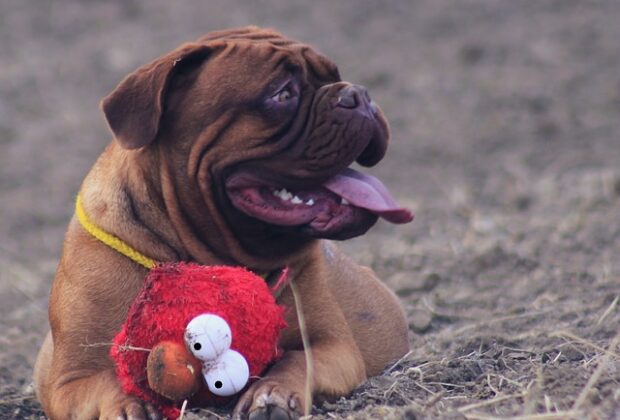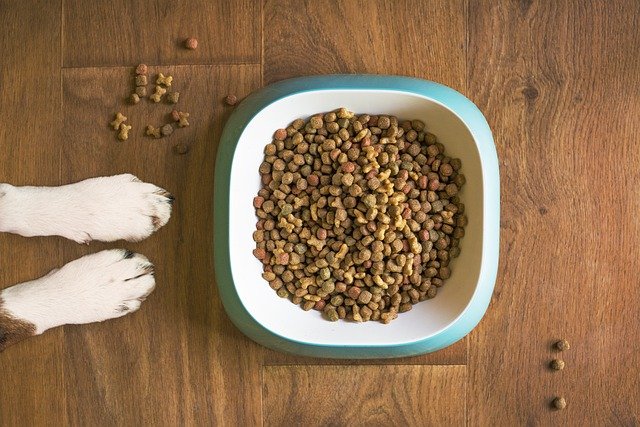Seeing your dog with frothy saliva around its mouth all of a sudden will be terrifying for any dog owner. It will not be unusual to think that your dog may possibly have Rabies at these moments. While it is a possibility, Rabies isn't the only thing that could cause a canine to produce froth. There are several other possible reasons, and we'll discuss why do dogs foam at the mouth in this article.
Table of Contents
Possible Reasons Dogs Foam at the Mouth
Intense Physical Activity
High-energy dogs can sometimes play with so much intensity that they drool to the point of excessively frothing at the mouth. While this is not a pleasant sight, it is entirely harmless to the dog and should clear once they stop the activity and calm down.
Dental Problems
Dental problems such as gingivitis (inflammation of the gums usually due to poor diet) and cavities can cause your dog to pant and salivate excessively, and this can lead to a buildup of thick, frothy saliva. If your dog suddenly starts frothing at the mouth, a dental issue might be the culprit.
Poison
Dogs will froth at the mouth if they ingest poison. It is one way they can try to rid their body of it. Of course, it is not possible for the pup to entirely eliminate the poison without help. If you suspect that your dog's foaming might be from ingesting poison, treat it as an emergency and seek urgent vet care immediately.
Anxiety and Stress
Like their humans, our dogs can undergo anxiety and stress. And because drooling is usually an involuntary action caused by a nervous reaction, some dogs may start drooling seemingly "out of nowhere. When combined with panting, familiar with stressed dogs, froths may form and will only stop when the dog calms down.
Ill Health
Certain health conditions can cause our canines to foam at the mouth. They range from mild to severe, with the most common being stomach ache. Your dog will try to get rid of anything it consumes that could be upsetting its stomach by panting and spitting, and this eventually leads to frothing until the dog finds relief.
Other health conditions that could cause your canine to foam in the mouth include seizures and Rabies. During an episode, dogs can begin to pant and drool more than usual, and this could cause a buildup of foam around the mouth. As a wide range of health conditions can cause seizures, a trained professional's proper diagnosis and treatment are required to put a stop to the foaming fully.
On the other hand, Rabies is often marked by foaming at the mouth accompanied by other symptoms such as disorientation, incoordination, and staggering. If you suspect that your dog's foaming might be from a rabies infection, seek urgent veterinary care and keep your dog away from other pets and people in the home.
Difficulty Swallowing
Dogs having trouble swallowing may sometimes froth at the mouth. This can happen when the dog has a toy/treat logged at the back of its mouth or throat. The frothing stops once the object is removed.
Check your canine's throat for any object that might be causing swallowing difficulty. If you find the thing and will be able to remove it yourself without causing injuries to the canine, then do so immediately. If you can't, do not try to force it out; but instead, contact your vet for proper removal.
General Tips for Preventing Dogs’ Foaming at the Mouth
Unless a severe underlying condition is causing your dog's foaming at the mouth, there are some simple steps you can take to prevent or manage the situation.
Keep Your Dog Hydrated
Provide your dog with an adequate supply of water before, during, and after high-energy physical activities. During intense physical activities, dogs lose lots of fluids from panting and drooling; replacing the lost fluid and making sure your dog can access clean and adequate drinking water while at play can help prevent foaming.
Regular Dental Care
Dogs require regular care as they are prone to dental problems such as tooth decay and infections. These conditions often require prescription medications such as antibiotics, surgical removal of the infected, and damaged tooth and tooth polishing.
You can play your part by regularly brushing your dog's teeth to prevent inflammation and plaque formation at home. Do this with a good quality canine toothpaste and consider providing it with dental chews/treats to improve overall oral health.Quality Food
Dental health conditions such as gingivitis are often caused by poor diet. And the resulting inflammation can cause your pup to froth at the mouth. So, provide your dog with quality meals rich in essential nutrients, whether commercial or homemade.
Keep Toxic Items Away
Like we would with young children, toxic chemicals, cleaning products, plants, and other potentially harmful products should be kept away from canines to prevent poisoning from ingesting these substances. Also, check that your area is free of toxic plants, toads, and frogs before letting your dog roam unsupervised.
Why Do Dogs Foam at the Mouth: Conclusion
Sudden foaming in the mouth can be concerning to new dog owners and those who may have never seen it happen before with their dogs. Thankfully, it is usually not a cause for concern as quickly resolved conditions often trigger it.
You can remedy many of these conditions at home with a few simple steps and lifestyle changes. In some cases, the conditions may require a trained professional's help to avoid worsening the dog's condition.
There are, however, few potentially life-threatening conditions that could cause a dog to foam at the mouth. These conditions include Rabies and seizures from nerve problems. While rare, you should take them seriously, and your dog is immediately given the required medical attention.
That said, if your puppy is foaming at the mouth, it is likely not being caused by a severe medical condition like Rabies, especially if it has had the core vaccines. The frothing should stop once the trigger or cause is adequately taken care of, and this may include getting your puppy to calm down, removing the foreign object in its throat, or providing it with the needed care at that point.
About the Author
Kirsten Heggarty
Kirsten created The Pet Handbook with the aim of sharing her knowledge about pets, pet food, healthy habits, and more. All of her advice is based on years of her own experience with her pets, and feedback that she has received from grateful readers about her tips. If you want to know more please read the About Me page.









